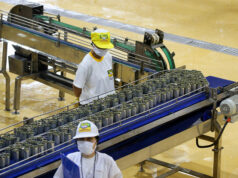OFFICIAL development assistance (ODA) financing for infrastructure is difficult to turn down because of the low cost, and will help bring about a “revolutionary” revival of Philippine infrastructure, a budget department official said.
Department of Budget and Management (DBM) Fiscal Planning and Reforms Bureau Director Rolando U. Toledo said during the panel discussion at the second Philippine Construction Congress that recent bilateral agreements have shifted the government’s focus outward.
“We have bilateral discussion[s] with China and Japan… so you can just imagine the lower interest rate that is being offered to the Philippines. We cannot just say no to that, to the offers of Japan and China.”
“That is probably one of the considerations of the government [in choosing how projects are financed].”
Last week, the Philippines signed a memorandum of cooperation with Japan’s Ministry of Land, Infrastructure, Transport, and Tourism.
Earlier, the Philippines signed an ODA deal for 10 bridge projects with China worth P146 billion.
Mr. Toledo said that with the government’s plan to spend almost P9 trillion from 2017 to 2022, infrastructure spending will rise from 5.4% of the gross domestic product (GDP) in 2017 to 9.3% of GDP by the time President Rodrigo R. Duterte finishes his term.
“This is revolutionary [because] in the past 50 years infrastructure spending was only at 2.6% of GDP which is why our infrastructure has remained subpar for the longest time,” he added.
Citing DBM data, around P391.2 billion was spent by the government as of September.
Also present during the panel was Public-Private Partnership (PPP) Center Project Development Service Director Lawrence G. Velasco who assured that the government is not abandoning the PPP program, with PPP being tapped for many projects on the operating end.
“The market is still there, [and] we are in open support and in close collaboration with various agencies on how we can ensure the projects they are procuring through general appropriations will be operated properly through PPP,” he added.
“The key is that it’s part of the mix, it’s not sidelined and it remains a conscious effort on the part of the government to look at each project and determine whether it is best implemented as a PPP.”
The PPP Center — which serves as the central coordinating body for private firms that want to take part in government projects — is currently overseeing 34 projects worth P439 billion. — Anna Gabriela A. Mogato



